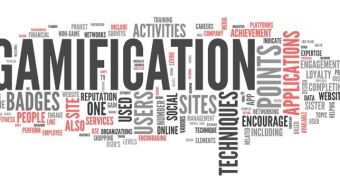Lately, we’ve heard a lot of talk about gamification being the future. Defined as the “application of gaming mechanics to non-gaming scenarios,” this new concept seems to be applied just about everywhere these days – in eLearning, in marketing, politics, shops and websites. Thus far, gamification has most frequently been used as a clever way to promote a business or product, but its potential goes beyond marketing strategies.
Everybody knows that gamers voluntarily invest countless hours in developing their problem-solving skills within the context of games, so, after seeing its great potential and realizing that it is basically the most cost-effective engagement strategy, more and more teachers have decided to adopt the gamification of education, a new didactic approach to motivate students to learn by using videogame design.
Basically, that means taking traditional gaming features and elements (the ones that get gamers hooked on Call of Duty, WoW, Diablo and other popular videogames) and applying them in the education space to promote desired behaviors, deliver a truly meaningful experience to students and make tricky situations more fun.
The gaming elements we are referring to include badges, achievements, leaderboards, time trials, collaborations and confrontations between students to engage them in some healthy competition and encourage them to work together when the situation requires it.
Incorporating elements from games into classroom scenarios is a way to provide students with opportunities to act autonomously, to show off their best skills, to learn in relationship to others and develop teamwork competences. Through this new approach, students are allowed to view their schoolwork as an exciting adventure, which gets them more focused and more excited about the training they are undertaking, and makes them more eager to apply the knowledge they acquire in their real-world jobs.
This week, we have seen a great example of gamification of the classroom in the form of Classcraft – a learning system developed by Shawn Young, a high-school physics teacher at Quebec's Le Salésien High School. Young’s classroom-based role-playing game is inspired by World of Warcraft and is designed to encourage and motivate students to learn.
But there are also other gamification models that proved successful and offered both teachers and students the opportunity to experiment with rules, emotions, and social roles. Growth Engineering’s model, for instance, is based on four basic pillars (leaderboards, badges, teams and competition) and is designed to boost learner engagement and get everyone to learn more and cement the knowledge.
Another example is Flipside, a gamified and personalized Middle School 6th-grade language arts adventure through which Michele Alvarez, its creator, is attempting to engage and motivate students into having fun with the curriculum, by directly referencing skills and activities they are using in the classroom.
Gamification can motivate students to engage in the classroom, give teachers better tools to guide, and reward students for bringing their full selves in the pursuit of learning. The blurring of boundaries between formal and informal learning can inspire students to learn lifelong and can show them that education can be a joyful experience.
However, there are also some challenges associated with the gamification of education, because once motivation is lost, so are the learning opportunities that this new approach seeks to realize. Moreover, it might absorb teacher resources, or teach students that they should learn only when provided with external rewards.
In conclusion, if teachers want to improve the chances of gamification bringing true value to schools, they must come up with projects that address the real challenges of schools, and focus on the areas where gamification can provide the maximum value both for teachers and for students.

 14 DAY TRIAL //
14 DAY TRIAL //